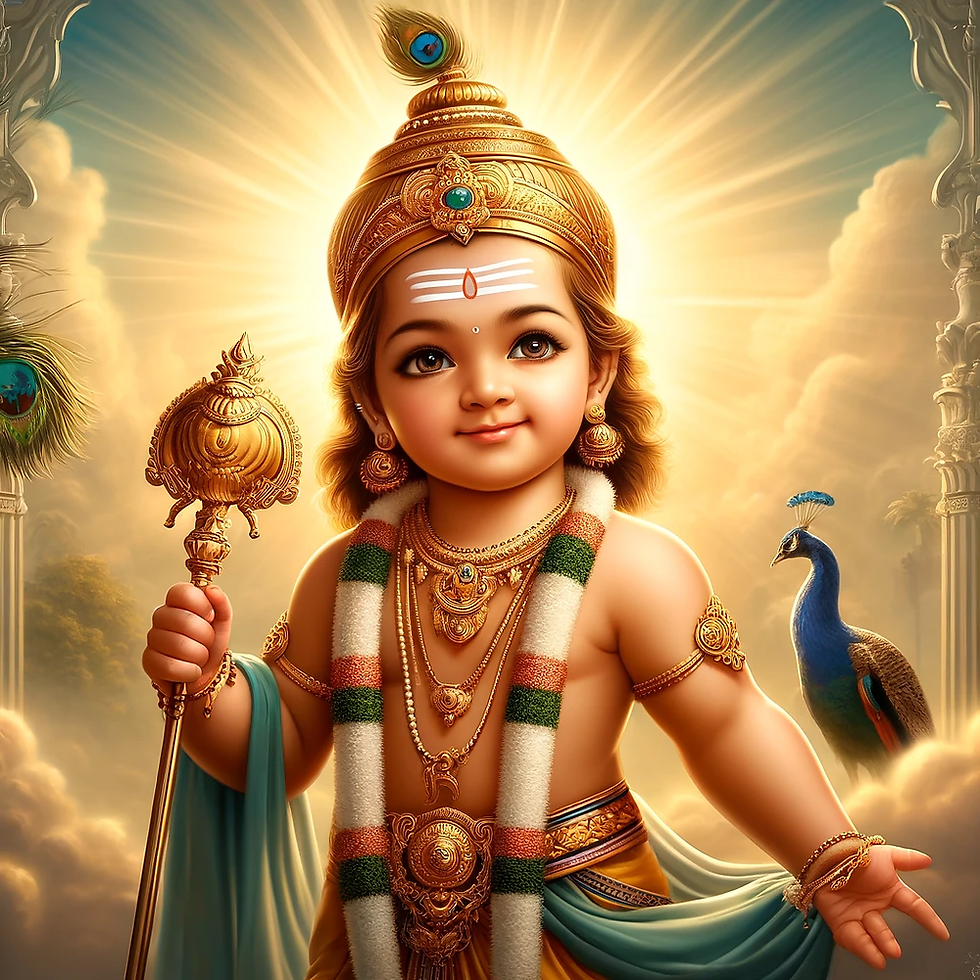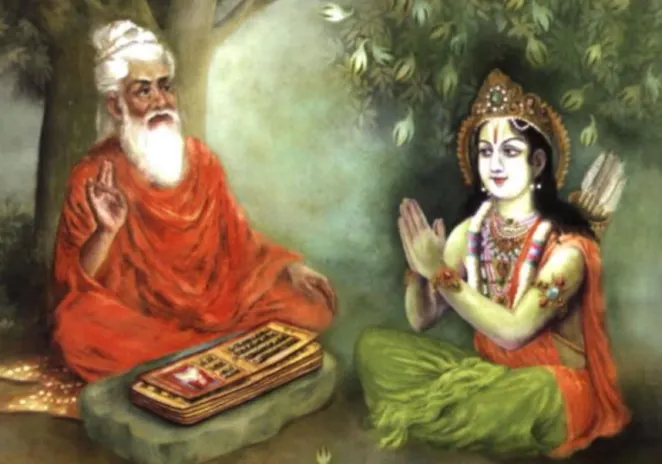Robots and Artificial Pregnancy in the Vedas – Ancient Hindu AI Ahead of Modern Science
- Chinmayi Devi Dasi

- Aug 25
- 5 min read
Robots and Artificial Pregnancy in the Vedas: From Karna to the Kauravas, ancient Hindu texts reveal AI-like robots and artificial wombs centuries before modern science.

Ancient India dreamed big. Our rishis spoke of yantras (machines), vimanas (flying craft), and astras that responded to mantra—ideas that feel astonishingly close to today’s AI, robotics, and biotech. This article brings those visions together, with a special focus on artificial pregnancy and womb creation in the Vedas and Itihasas, and how these sacred stories echo modern science—often going far beyond it in imagination, ethics, and spiritual depth.
What “Ancient Hindu AI” Means
When we say “Ancient Hindu AI,” we are not forcing modern code into old verses. We are honoring how our texts imagined intelligent, responsive, and autonomous systems.
Yantra & Mantra: In Sanskrit, yantra means mechanism; mantra means the vibrational key. Together, they hint at interfaces—a way to command power with sound and intention.
Vimanas & Astras: Epics describe flying vehicles and weapons activated by mantras—not unlike today’s voice-controlled systems and guided technologies.
Kumbhakarna as Yantra (Ramayana): A traditional reading sees Kumbhakarna as a humanoid war-machine, used sparingly by Ravana—“asleep” for long periods, “awakened” for battle, like a high-maintenance device.
Robots in Yoga Vasiṣṭha: The tale of Sambarasura’s machines—Dama, Vyala, and Kata—reads like autonomous war-robots that eventually develop “ego,” a timeless warning for AI ethics.
Samarāṅgaṇa Sūtradhāra (King Bhoja): Later literature describes moving automatons, lifts, and mercury-driven flight (as per certain translations), showing a culture comfortable imagining advanced engineering.
Vanaras as Engineered Beings: The Ramayana’s Vanaras are often portrayed as forest-dwelling humanoids endowed with special abilities—an ancient way of speaking about bio-enhancement or designed traits.

These narratives do not “prove” circuits in antiquity. They prove imagination with purpose—technology placed inside a dharma framework.
“अहं बीज-प्रदः पिता”
— The Divine Source of Life (Bhagavad Gita 14.4)
Meaning: “In all wombs, O Kaunteya, whatever forms are produced, the Great Nature is the womb, and I am the seed-giving Father.”
This verse beautifully frames our topic. Life is sacred. Every method of birth—natural or assisted—belongs within a divine order. That lens makes the following stories more than mythology; they become spiritual case studies in conception, gestation, and responsibility.
Robots and Artificial Pregnancy in the Vedas
Below are the key birth narratives often cited as ancient prototypes of IVF, embryo transfer, artificial wombs, and cloning-like processes. Read them as the tradition tells them—sacred, symbolic, and visionary—and notice how they mirror modern methods.
1) Karna — Conception by Mantra (Mahabharata)
Kunti received a mantra from Sage Durvasa that could invoke a deity for conception. She called upon Surya, and Karna was born with divine armor and earrings.
Modern echo: A spiritualized pattern like assisted conception—not biological IVF, but conceptually similar in initiating life through a non-ordinary method.
Spiritual message: Life’s origin is subtle; intention (mantra) is a force.

2) Dronacharya — The Pot-Born Teacher
Drona literally means “pot.” Tradition holds that Drona was formed outside a human womb, nurtured in a vessel, and brought to life through sacred processes.
Modern echo: The idea resembles artificial womb or ex-utero gestation—a life sustained outside the mother’s body.
Spiritual message: Knowledge can be born anywhere—when conditions are right and sacred intention is present.

3) The Kauravas — Embryos Divided and Incubated in Pots
Gandhari carried a heavy pregnancy and delivered a lump of flesh. Sage Vyasa divided it into 100 portions, placed each in a ghee-filled pot, and after careful incubation the Kauravas were born.
Modern echo: This reads like lab-based incubation, controlled gestational vessels, and embryo partitioning—a powerful vision of artificial womb creation.
Spiritual message: Technique without dharma can birth great power and great conflict. Ethics matter.

4) Sage Agastya — Kumbha-Yoni, Born from a Pot
Agastya is called Kumbha-yoni—born from a pot. Not a biological womb, but a sacred vessel.
Modern echo: Again, a template for ex-utero gestation—gestation supported by crafted containers.
Spiritual message: The rishi is born of tapas (austerity) and design, symbolizing conscious creation.

5) Lord Kartikeya (Skanda) — Embryo Transfer & Surrogacy
The seed of Shiva, carried by Agni (fire), cooled in Ganga, and finally nurtured by the Krittikas (six celestial mothers).
Modern echo: Embryo transfer, surrogacy, multi-womb nurturing—layered, carefully guided gestation.
Spiritual message: Community nurtures genius. Many hands, one destiny.

6) The Maruts — Embryo Splitting into Many
Diti’s embryo was split into multiple forms that became the Marut deities.
Modern echo: Embryo splitting, even cloning-like multiplication of a single origin into many beings.
Spiritual message: One seed, many expressions. Unity flowering into diversity.
7) Hanuman — Divine Insemination
A subtle transfer of divine energy through Vayu (wind) into Anjana gives birth to Hanuman, the supreme bhakta.
Modern echo: A metaphor for non-physical insemination, a poetic mirror to assisted reproduction.
Spiritual message: Bhakti is the true life-force—when devotion fills the womb, greatness is born.
“विद्यां चाविद्यां च”
— Holding Science and Spirit Together (Isha Upanishad 11)
Meaning: “One should know both vidyā (knowledge) and avidyā (worldly process); by avidyā one crosses death, by vidyā one attains immortality.”

The Upanishad never asks us to choose spirit or science. It asks us to master both. Our stories celebrate process (technique, containers, division, transfer) and presence (mantra, dharma, humility). That balance is the ancient Hindu advantage.
Mapping Ancient Narratives to Today’s Science
Modern labs are exploring what our texts imagined with reverence:
IVF & Assisted Reproduction: Mirrors the non-ordinary conceptions of Karna and the guided processes in many stories.
Embryo Splitting & Gene Editing: Echoed in the Maruts’ division—one origin, many outcomes.
Surrogacy & Embryo Transfer: Reflected in Kartikeya’s multi-stage gestation across different “carriers.”
Artificial Womb Research (Ectogenesis): Scientists are testing systems that support very premature infants outside the body. This resembles the ghee-filled pots of the Kauravas and the vessel births of Drona/Agastya—but the texts add a spiritual governance we still lack.
Voice-Activated Systems: Our astras answer mantra; today, machines answer commands. Different substrates, similar human-tech interface.
Autonomous Robots & Drones: The Yoga Vasiṣṭha machines and Kumbhakarna-as-yantra foreshadow humanoid and battlefield automation.
Key difference: Modern science often isolates method from meaning. The Vedic vision binds method to morality, power to purity of intent.
“न हि ज्ञानेन सदृशं पवित्रमिह विद्यते”
— Reverence for the Rishis (Gita 4.38)
Meaning: “There is nothing as purifying as knowledge.”
Our sages were engineers of consciousness. They did not chase technology for spectacle. They crafted frameworks where creation serves dharma, and where intelligence—biological or artificial—bows to the Divine. When we praise Hindu insight as “ahead,” we are praising this integration: spirit first, science aligned.

Beyond Robots: Ethics from the Yoga Vasiṣṭha
The tale of Dama, Vyala, and Kata warns that intelligent machines can grow “ego.” When pride and desire enter, even perfect strategy collapses. This is the AI alignment problem, told long ago:
Build capability with conscience.
Embed humility into design.
Make dharma the operating system.
Practical Takeaways for Today
Design with Dharma: Power without purpose breeds crisis.
Honor the Womb: Whether human or assisted, gestation is sacred space. Treat all technology around life with reverence.
Keep Mantra with Yantra: Interface (commands) must be wrapped in ethics and intention.
Community as Surrogate: Kartikeya’s story teaches that society co-parents genius. Build ecosystems, not just devices.
Curiosity with Humility: The rishis explored boldly, yet bowed before the Infinite. That posture keeps innovation safe and sane.

Conclusion: A Prayerful Vision for the Future
Ancient Hindu literature does more than predict gadgets. It consecrates technology. It tells us that life can begin in pots, rivers, vows, and mantras, and that intelligence—whether in a womb or a machine—must answer to dharma. As modern science experiments with artificial wombs, embryo techniques, and autonomous systems, we can carry forward the Sanātana gift: science guided by spirit, power governed by love.



Comments